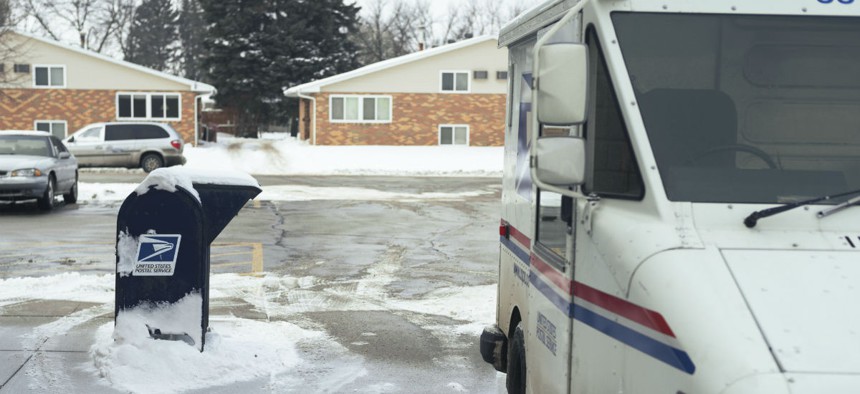
Ben Harding/Shutterstock.com
Obama Administration Makes Long-Desired Change to Postal Service Pensions
USPS advocates have said the reform would prevent agency overpayments.
The U.S. Postal Service could finally have its payments into the federal employee pension account calculated using assumptions from its workforce specifically, rather than the federal workforce as a whole, which has long been a sticking point at the mailing agency.
USPS leadership has for years argued its payments into the Federal Employees Retirement System and the Civil Service Retirement System have been too pricey due to the difference between the demographics of its employees and the rest of government. Salary growth and workforce characteristics of the Postal Service differ significantly from those of other federal organizations—postal workers generally remain in a similar pay grade throughout their careers while non-postal feds generally see their salaries increase significantly; and postal workers generally die younger than the rest of the federal workforce. Under a proposed rule issued by the Office of Personnel Management on Thursday, the Postal Service would make payments into the pension funds using a separate calculation based exclusively on its employees.
While estimates have differed, postal reform advocates and the agency itself have said it has overpaid into the accounts to the tune of billions of dollars. A 2012 report commissioned by the USPS inspector general estimated USPS’ FERS surplus has reached $11.4 billion due to a growing gap between the salary of the average postal worker and the salaries of other federal employees, among other factors.
The Office of Personnel Management, however, said the surplus is closer to $2.6 billion due to lower long-term interest rates than the agency originally used in its calculations. In its fiscal 2016 budget, the White House said the overpayment amounted to $1.5 billion. President Obama has consistently called for the postal-specific calculation, as have numerous iterations of proposed postal reform put forward in the last several sessions of Congress. Those proposals have called for OPM to refund the overpayments back to the Postal Service.
OPM said in 2012 it was legally required to make its calculation based on governmentwide, rather than postal-specific, calculations. OPM did not immediately respond to an inquiry into the change. The agency said in the proposed rule it made the change after reviewing a request from the Postal Service. A USPS spokesman said the exact implications of the rule were unclear, explaining it might not contain everything the agency wanted but would be helpful. USPS plans to meet with OPM next week to go over the details of the proposal.
OPM suggested making additional calculations specific to each class of FERS contributor; federal employees currently pay one of three different percentages toward their pensions based on when they were hired, ranging from 0.8 percent to 4.4 percent of their paychecks.
In 2013, Rep. Stephen Lynch, D-Mass., introduced a standalone bill to require OPM to create a postal-specific formula to determine its pension fund payments. Noting USPS’ fiscal difficulties, the agency’s IG has said, “The Postal Service cannot afford to make pension contributions that are not necessary for future benefits.” Advocates for the Postal Service have long called for the reform, with National Association of Letter Carriers President Fredric Rolando calling it a “nagging” problem. An NALC official said Thursday it was unclear if the rule would implement everything they had pushed for, but it was at least moving the issue in the right direction.
Earlier this year, Postmaster General Megan Brennan cited pension overfunding as one of four key issues that had to be addressed for her agency to sign off on any reform effort.
Image via Ben Harding/Shutterstock.com.
NEXT STORY: Last-Minute Retirement Tips







